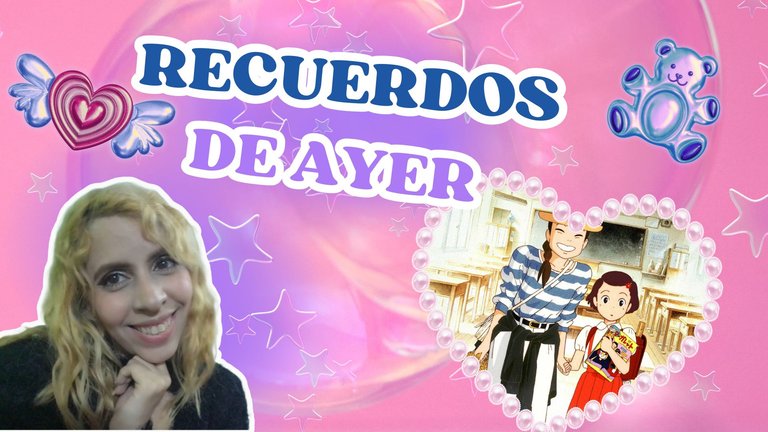
Cover designed by me in canva editor
Truly Ghibli surprises me more every day with the movies I see, almost all the ones I have seen so far have left me a valuable message, they have given me a life lesson, but without a doubt Omohide Poro Poro (Only Yesterday in English or Recuerdos del ayer in Spanish) has been one with which I have felt more connected (I promise that later I will make a ranking) but Wow! It's as if every Ghibli movie knows your feelings and goes straight to them, each one touches a different fiber of your heart, but this time it went straight to the memories, to your “me” from the past, so from the beginning it promised to be nostalgic, but without further ado let's start with this review.
De verdad que Ghibli me sorprende cada día más con las películas que veo, casi todas las que he visto hasta ahora me han dejado un mensaje valioso, me han dado una lección de vida, pero sin lugar a dudas Omohide Poro Poro (Only Yesterday en inglés o Recuerdos del ayer en español) ha sido una con las que más me he sentido conectada (prometo que más adelante haré un ranking) pero Wow! Es como si cada película de Ghibli conociera tus sentimientos y va directo a ellos, cada una toca una fibra distinta de tu corazón, pero en esta ocasión fue directo a los recuerdos, a tu "yo" del pasado, así que desde el inicio prometía ser nostálgica, pero sin más dilación comencemos con esta review.
Overview/Resumen
The story begins with Taeko Okajima, a modern girl from Tokyo who wants to travel to the countryside to find herself again, tired of the absurd prejudices of the time and the society in which she lives, constantly criticized by her family who saw incredibly strange the fact that a young woman of 27 years old was not married yet, but from the moment she boards the train to travel to the countryside, until she decides to return to the city, Taeko also travels into her past through her memories, meeting her 10-year-old alter ego again, reliving experiences that were part of her life such as her tendency to whimsy, her first love, her fears and even the internal conflicts that came from knowing that her body would undergo “strange” changes later on, and all these memories will help her to understand herself more in the present.
La historia comienza con Taeko Okajima, una chica moderna de Tokio que quiere viajar al campo para reencontrarse consigo misma, cansada de los prejuicios absurdos de la época y la sociedad en la que vive, constantemente criticada por su familia que veía increíblemente extraño el hecho de que una joven de 27 años no estuviese casada aún, pero desde el momento en el que aborda el tren para viajar al campo, hasta que ella decide retornar a la ciudad, Taeko viaja también a su pasado a través de los recuerdos, volviendo a encontrarse con su alter ego de 10 años, reviviendo experiencias que formaron parte de su vida como su tendencia al capricho, su primer amor, sus miedos y hasta los conflictos internos que le generaba el saber que su cuerpo experimentaría cambios “extraños” más adelante, y todos estos recuerdos le ayudarán a comprenderse más a sí misma en el presente.
Trailer
Trailer in english
My Opinion/Mi Opinión
I don't know where to start but I think I'll start with the animation, I consider it one of the best of its time, there is a lot of attention to detail, especially in the contrasts of light and shadows, but one of the best things I noticed is that not only the characters are animated, but also their environment, the branches of the trees move to the beat of the wind, the night lights move fast when entering through the train windows, it's amazing to see how they animated everything. On the other hand I noticed that they drew some expression lines on Taeko's face, even though a young girl of that age wouldn't have them (nor me who's almost 40 😄) but I guess it was the only way to reflect the age in the character, the fact that she's in a decisive stage of her life where, according to society's standards, she should already be established not only in the working but in the personal sphere.
No sé por donde empezar pero creo que lo haré por la animación, considero que es una de las mejores de su época, hay mucha atención a los detalles, sobre todo en los contrastes de luz y sombras, pero una de las mejores cosas que noté es que no solo los personajes están animados, sino también su entorno, las ramas de los árboles se mueven al compás del viento, las luces nocturnas se mueven rápidas al entrar por las ventanillas del tren, es asombroso ver como animaron todo. Por otra parte me di cuenta que dibujaron algunas líneas de expresión en el rostro de Taeko, a pesar de que una joven de esa edad no las tendría (ni yo que tengo casi 40 😄) pero supongo que era la única manera de reflejar la edad en el personaje, el hecho de que se encuentra en una etapa decisiva de su vida donde, según los estándares de la sociedad, ya debería estar establecida no solo en el ámbito laboral sino en el personal.
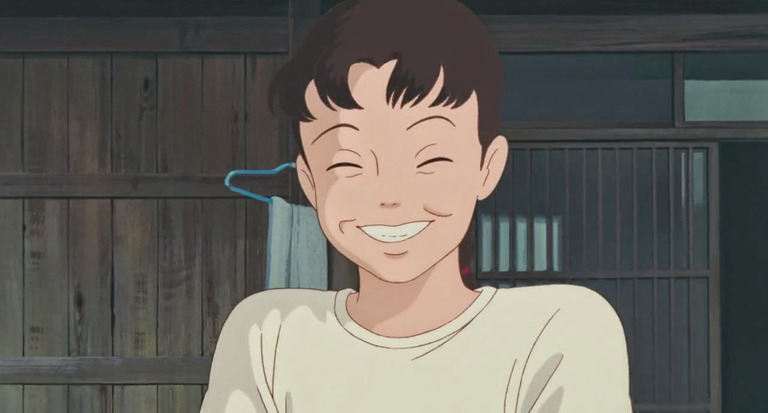
But I think the most relevant thing in this film is definitely its story, most Ghibli films present us with two different scenarios as a kind of parallel worlds, for example the world of the Borrowers and the Humans (Arriety) The world of the spirits and the humans (Shihiro's Journey) The world of the cats and the humans (The Return of the Cat) in short, we are always presented with an alternate life to the one the main character leads every day, and in this film we can also find two parallel “worlds”: the past and the present, but both are part of the reality of the protagonist, like many other Ghibli characters, she must also make a journey but into herself.
Pero creo que lo más relevante en este film es definitivamente su historia, la mayoría de películas de Ghibli nos presenta dos escenarios diferentes como una especie de mundos paralelos, por ejemplo el mundo de los Borrowers y el de los Humanos (Arriety) El mundo de los espíritus y el de los humanos (El viaje de Shihiro) El de los gatos y el de los humanos (EL retorno del gato) en fin, siempre se nos presenta una vida alterna a la que lleva cotidianamente el personaje principal, y en esta película también podemos encontrar dos "mundos" paralelos: el pasado y el presente, pero ambos forman parte de la realidad de la protagonista, al igual que muchos otros personajes de Ghibli, ella también debe hacer un viaje pero hacia el interior de ella misma
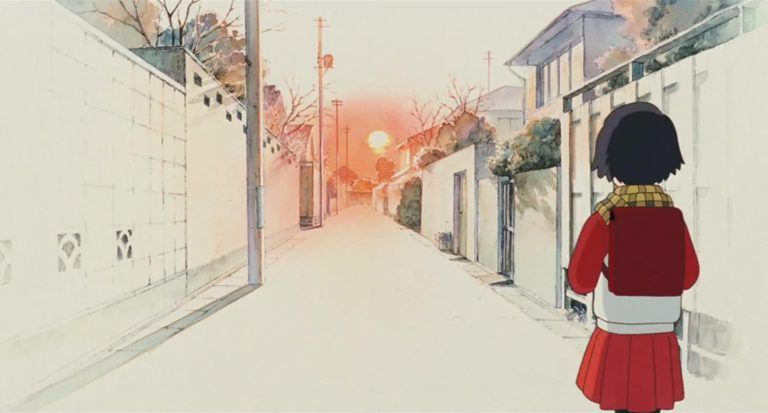
The film is incredibly nostalgic because it is inevitable that we as viewers also make a trip to our own childhood, with the day to day and the responsibilities we have it is easy to leave behind that child or child we were in the past, but what we totally ignore is that from that child depends on what we are now and what we will be in the future. Our experiences, the upbringing we had, the social canons that were handled at the time we grew up, everything influences the formation of our personality, traveling to the past allows us to check how much we have evolved, or if on the contrary we are stuck in a pattern of behavior imposed by other people (parents, schoolmates, neighbors, friends, in short) evolution and change of thinking are inevitable but we always stay with something of yesterday.
El film resulta increíblemente nostálgico porque es inevitable que nosotros como espectadores también realicemos un viaje a nuestra propia niñez, con el día a día y las responsabilidades que tenemos es fácil que dejemos atrás a esa niño o niño que fuimos en el pasado, pero lo que ignoramos totalmente es que de ese niño o niña depende lo que somos ahora y lo que seremos en el futuro. Nuestras vivencias, la crianza que tuvimos, los canones sociales que se manejaban en la época en la que crecimos, todo influye en la formación de nuestra personalidad, viajar al pasado nos permite comprobar cuanto hemos evolucionado, o si por el contrario nos encontramos estancados en un patrón de conducta impuesto por otras personas (padres, compañeros de escuela, vecinos, amigos, en fin) la evolución y el cambio de pensamiento son inevitables pero siempre nos quedamos con algo del ayer.
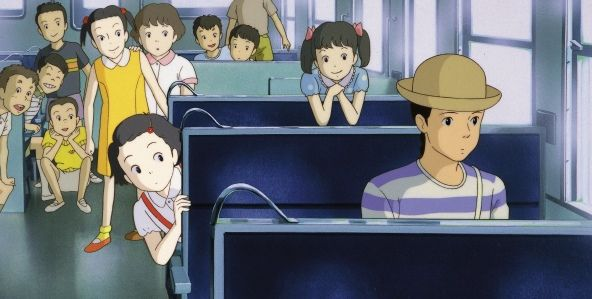
A scene that I really liked is when Taeko remembers a boy who studied with her, he was a passing student, the thing is that he had no manners and apparently no hygiene, which is why she avoided him, but through introspection, with the adult mentality of the present, Taeko discovers things that at the time she could not, such as that the boy realized the rejection that he generated, So he distanced himself from her (without losing his solemnity or rather his pride and apparent bravado in order not to lose his dignity) and even desisted from shaking her hand to say goodbye when she arrived on the last day of school, supposedly out of mere arrogance, but the truth was that deep down he understood why she rejected him and he wanted to avoid an awkward moment. It was an emotional scene worth watching again and again.
Una escena que me gustó mucho es cuando Taeko recuerda a un niño que estudió con ella, era un estudiante de paso, el caso es que él no tenía modales y al parecer tampoco higiene, razón por la cuál ella lo evitaba, pero a través de la introspección, ya con la mentalidad adulta del presente, Taeko descubre cosas que en su momento no pudo, como por ejemplo, que el niño se daba cuenta del rechazo que él le generaba, así que se alejó de ella (sin perder la solemnidad o más bien orgullo y aparente actitud brabucona para no perder la dignidad) incluso desistió de darle la mano a ella para despedirse cuando llegó el último día de clases, supuestamente fue por mera arrogancia, pero la verdad era que en el fondo entendía porqué ella lo rechazaba y implemente quiso evitarle un momento incómodo. Fue una escena emotiva que vale la pena ver una y otra vez.
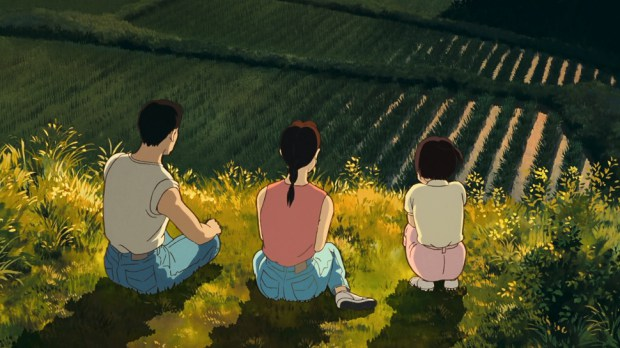
But my favorite scenes are the ones at the end, when Taeko returns to Tokyo and then we see her go back to the countryside, because the animation gave us moments of interaction between that Taeko girl and Taeko woman, as if she has finally found herself, and this is only possible because she is at peace with herself, she has managed to understand things she didn't before, she managed to discover her own abilities and skills, like when she remembered that she wasn't good at math, but that didn't make her less competent as she was very good at other things, she also remembered her time in the theater and how she discovered by herself that she didn't really like it that much. The Taeko we see in these final scenes, which are actually credits scenes, while we perceive her sad and nostalgic at the beginning, we can perceive her as a much more mature and happy woman as time goes by and the time to go back to the countryside approaches, it is very touching, you can't help the tears, it's like seeing yourself when you were a child or a kid.
Pero mis escenas favoritas son las del final, cuando Taeko regresa a Tokio y luego la vemos ir de vuelta al campo, ya que la animación nos regaló momentos de interacción entre esa Taeko niña y la Taeko mujer, como si finalmente ella se hubiese encontrado a sí misma, y esto solo es posible gracias a que está en paz consigo misma, ha logrado comprender cosas que antes no, logró descubrir sus propias capacidades y habilidades, como cuando recordó que no era buena en matemáticas, pero eso no la hacía menos competente ya que era muy buena para otras cosas, también recordó su paso por el teatro y como descubrió por si misma que en realidad no le gustaba tanto. La Taeko que vemos en estas escenas finales, que en realidad son escenas de créditos, si bien la percibimos triste y nostálgica al inicio, la podemos percibir como una mujer mucho más madura y feliz a medida que el tiempo pasa y se acerca el momento de volver al campo, es muy conmovedor, no puedes evitar las lágrimas, es como verte a ti misma cuando eras niña o niño.
This movie left me with something very valuable and that is gratitude, I am definitely grateful for the beautiful childhood I had and for everything I learned, for everything I lived, for the training I received, the upbringing, the cuddles and also for the reprimands, for the people I met and those who moved away as well, all that led me to be who I am today. Just as I consider Ponyo as the most childish and tender film of Ghibli Studios, Memories of Yesterday is one of the most reflective and for adults that it has to its credit, personally I consider that it is recommended to watch it from the age of 25, but from then on you can perfectly identify with it no matter how old you are. Thank you so much for reading my review, friends, see you another time 😉
Esta película me dejó algo muy valioso y es el agradecimiento, definitivamente estoy agradecida por la hermosa niñez que tuve y por todo lo que aprendí, por todo lo que viví, por la formación que recibí, la crianza, los mimos y también por las reprimendas, por las personas que conocí y las que se apartaron también, todo eso me llevó a ser quien soy hoy en día. Así como considero a Ponyo como la película más infantil y tierna de los Estudios Ghibli, Recuerdos del ayer es una de las más reflexivas y para adultos que tiene en su haber, personalmente considero que es recomendable verla a partir de los 25 años, pero de ahí en adelante te puedes identificar perfectamente con ella sin importar la edad que tengas. Muchas gracias por haber leído mi reseña, amigos, nos vemos en otra oportunidad 😉
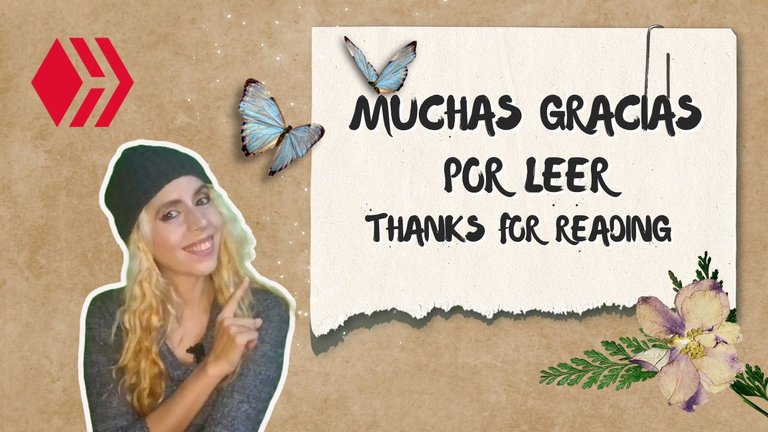
Imagen diseñada por mi en el editor de Canva.